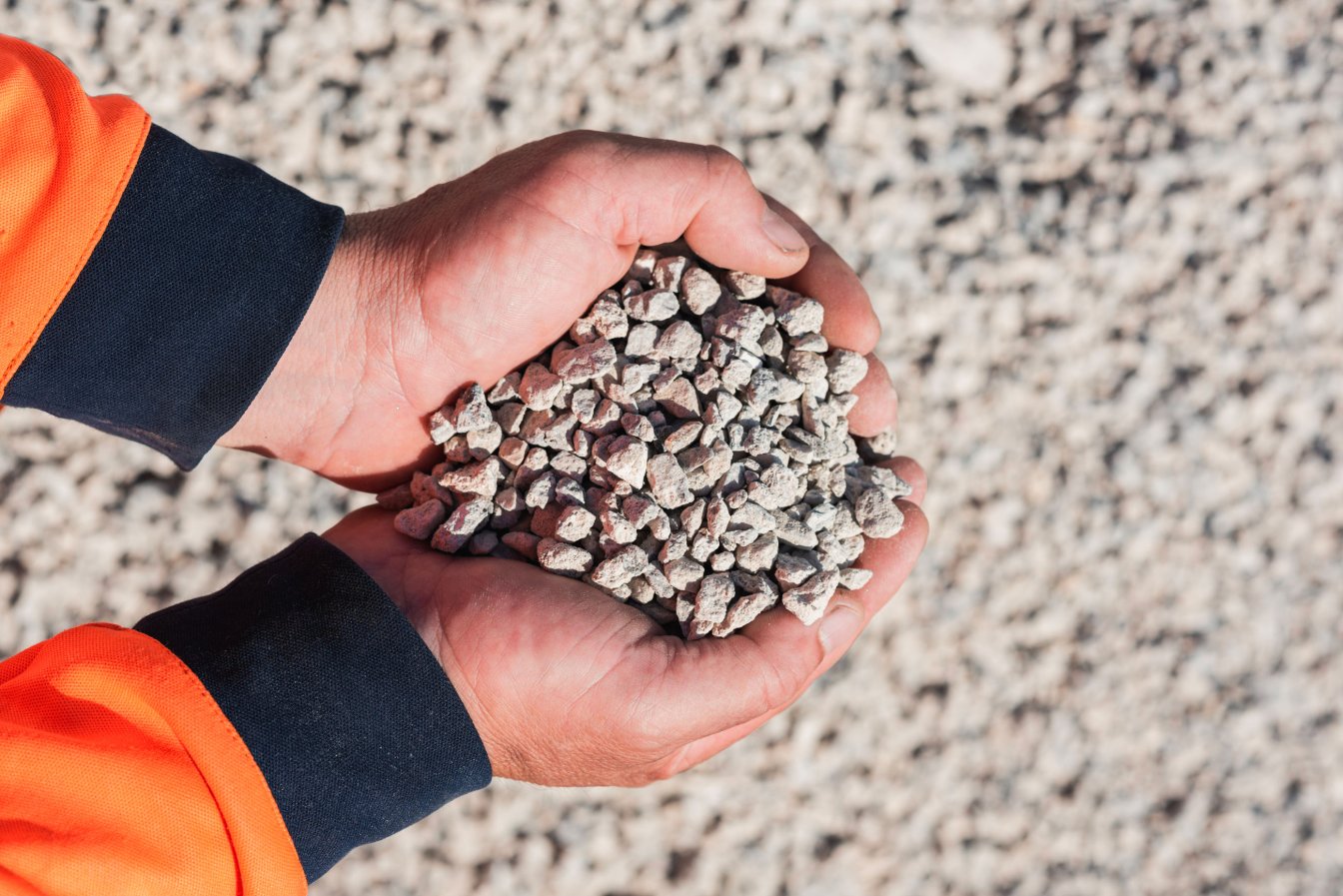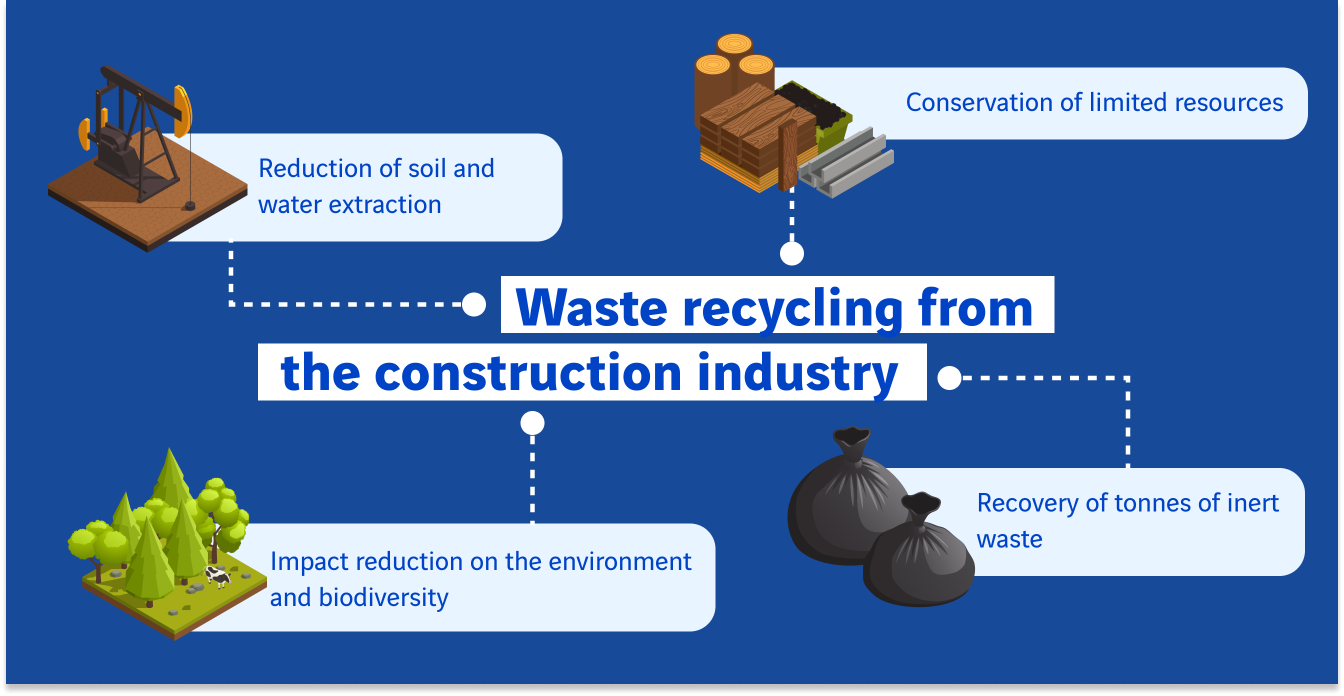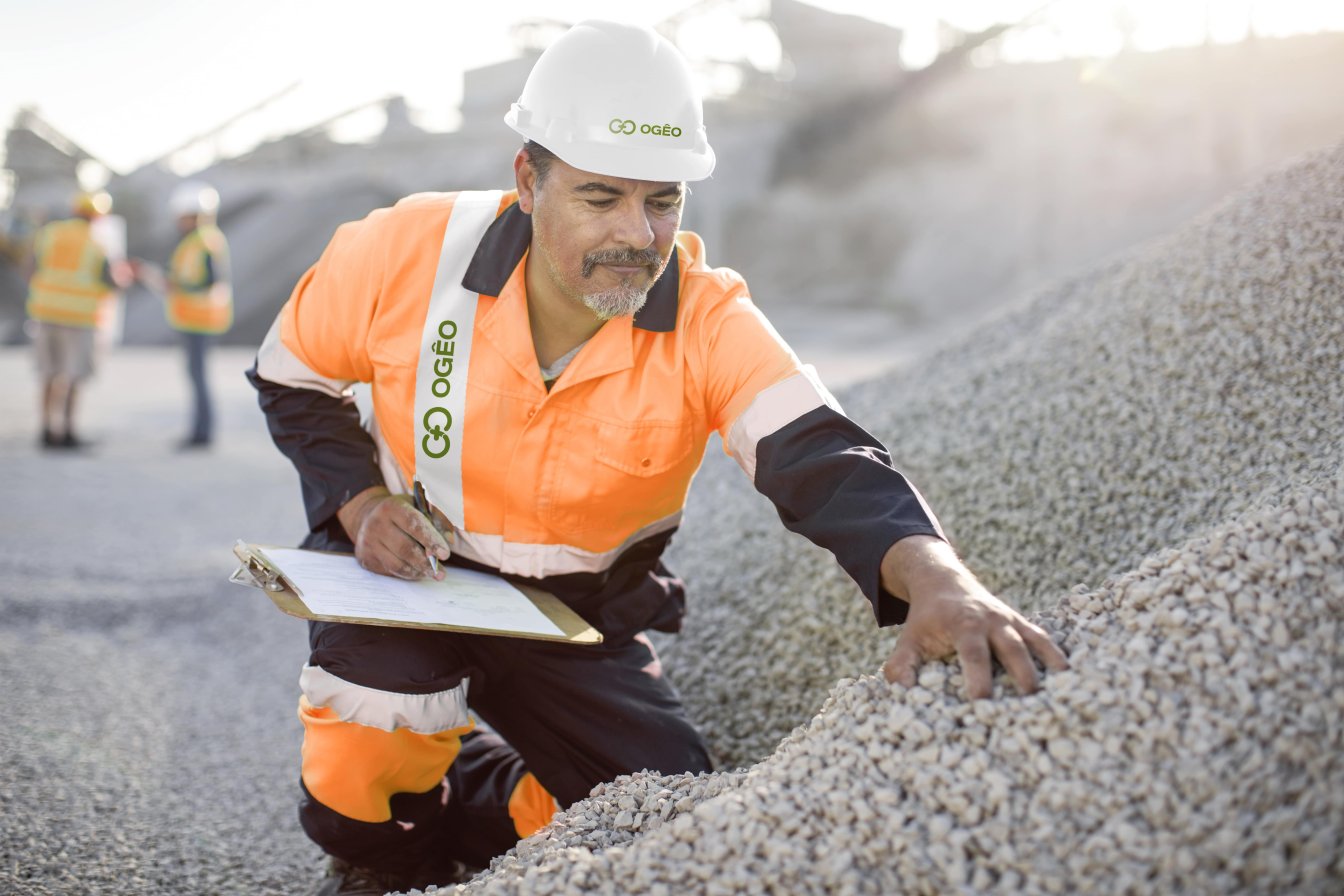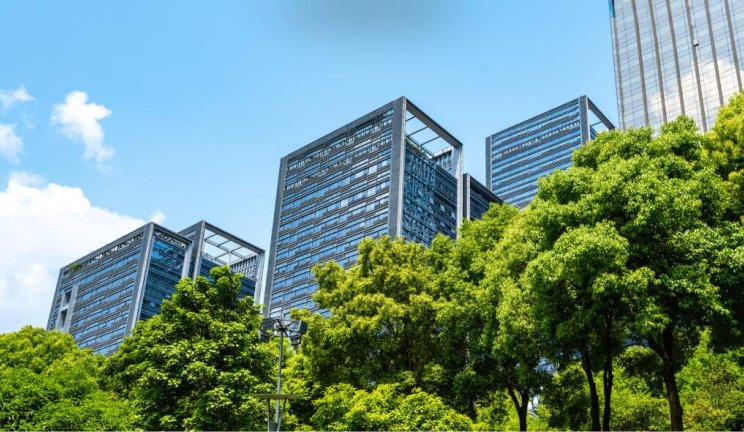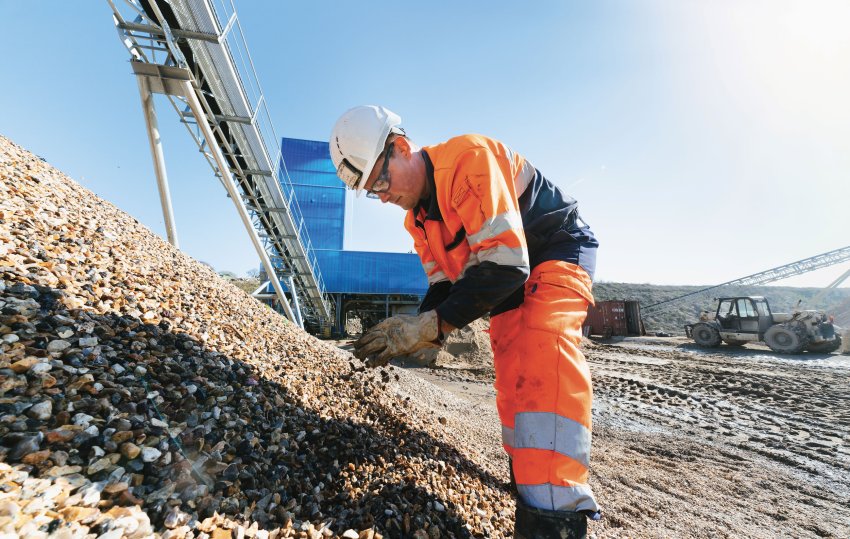
Recycled aggregates: the circular economy supplying the construction sector
Aggregates, those tiny fragments of rock used in the majority of construction materials, are the second most widely consumed resource in the world after water! The production and use of recycled rather than virgin aggregates address two major challenges: conserving natural resources and recovering construction waste.
5 tonnes
Per year and per inhabitant.
Aggregates are the most consumed resource after water!
What are aggregates?
Natural aggregates are the small fragments of rock also known as gravel, chippings or sand depending on their size. They usually come from solid rock or are extracted from sea and river beds. They go into most construction materials: concrete, mortar, asphalt mix, tarmac, etc. From roads to runways, from houses to industrial buildings, aggregates are everywhere!
Recycled aggregates: from a linear to a circular model
The circular economy is based on a simple principle: to produce responsibly by wasting fewer resources and reducing waste generation. Ideally, it means moving from everything being disposable to everything being recoverable. The traditional linear approach to aggregates involves extracting them, transporting them, using them in all kinds of construction – and that’s it! The circular model opens up new prospects: recycled aggregates made from construction-sector waste.
Reducing the extraction of virgin aggregates
Using recycled aggregates helps to reduce extraction on land and under water, and to conserve valuable and scarce resources. It also avoids some of the impact on natural habitats and biodiversity, especially since natural aggregate production causes various forms of pollution. This is mainly atmospheric, due to the use of heavy machinery for extraction and above all transporting the aggregates, often by road. But there is also visual pollution, especially where aggregates are obtained from solid rock in quarries.
Recovering construction waste
The construction sector is by far the largest waste producer: 250 million tonnes per year in France alone! Recycled aggregates are a major opportunity to recover these thousands of tonnes of inert waste, which are currently stored away in specialist facilities or in the worst cases, dumped illegally.
250
tonnes of waste annually generated bu the construction sector in France - three-quarters of the country's total waste.
Construction using waste to save the planet
To recycle materials from demolition by making them into aggregates, and to reduce their transportation via local short supply loops, is the double challenge being addressed by by VINCI Construction’s Granulat+ initiative.
Granulat+ facilities able to accept, sort and recycle deconstruction waste are making it possible to recycle 100% of concrete and asphalt waste. Each of its 130 certified sites meets a recovery standard and offers a range of services, including logistics, to facilitate the transportation of waste and recycle it as aggregates. These recycled aggregates will become the raw ingredients for new construction materials.
In aggregate production, one-third of the emissions come from production, but two thirds are from transport.
Christophe Jozon, materials & industries Director at VINCI Construction
The ecological benefit of recovery is heightened when the waste is sourced from worksites near the recycling plant, reducing the greenhouse gas emissions caused by transport. Prioritising river or rail transport rather than roads to move large quantities can further reduce the environmental impact of producing recycled aggregates. This is one of the options chosen the recycling SPL platform of Gennevilliers (Hauts-de-Seine, France). Staff at this facility, which boasts its own rail and river junctions, are weighing, sorting, washing and recycling up to 80,000 tonnes of waste from Grand Paris Express worksites.
By promoting local recycling, the 130 certified Granulat+ sites in France recover more than eight million tonnes of aggregates annually – 20% of the market. The aim is to double these volumes by 2030.
Generalising circularity of materials
VINCI Construction is going one step further by increasing the proportion of secondary resources in the formulation of aggregates.
With its new Ogêo brand, products are "formulated": they are composed of both primary resources (aggregates from its quarries) and secondary resources (mainly materials from deconstruction) from its eight local recycling channels.
The proportions of primary and secondary resources are allocated on a case-by-case basis, according to the technical and aesthetic needs of each customer and each project, and the availability of resources in a given area. The particle size, strength, appearance and traceabilitý of the materials used in the formulation of the finished product have been the subject of study and numerous laboratory tests.
Sources :
Lafarge.fr
Ecologie.gouv.fr
Pictures :
© Atypix
© Buena Onda films
© Matthieu Engelen
Subscribe
Stay tuned : receive our newsletter
Every quarter, discover new articles, exclusive features and experts' views delivered straight to your inbox.
Most viewed
Vous aimerez aussi
Marina Lévy - Companies at the heart of ocean conservation issues
Marina Lévy, oceanographer, research director at the CNRS and ocean advisor to the president of the French National Research…
Building with and for nature
Whether creating barrages, stripping away topsoil, cutting down trees or digging channels, humans have spent thousands of…
Bridging the construction gender gap: paving the way to a career in industry for women in Colombia
In 2025, the Ruta 40 consortium led by VINCI Construction Grands Projets completed work on widening and upgrading the Bogotá…
